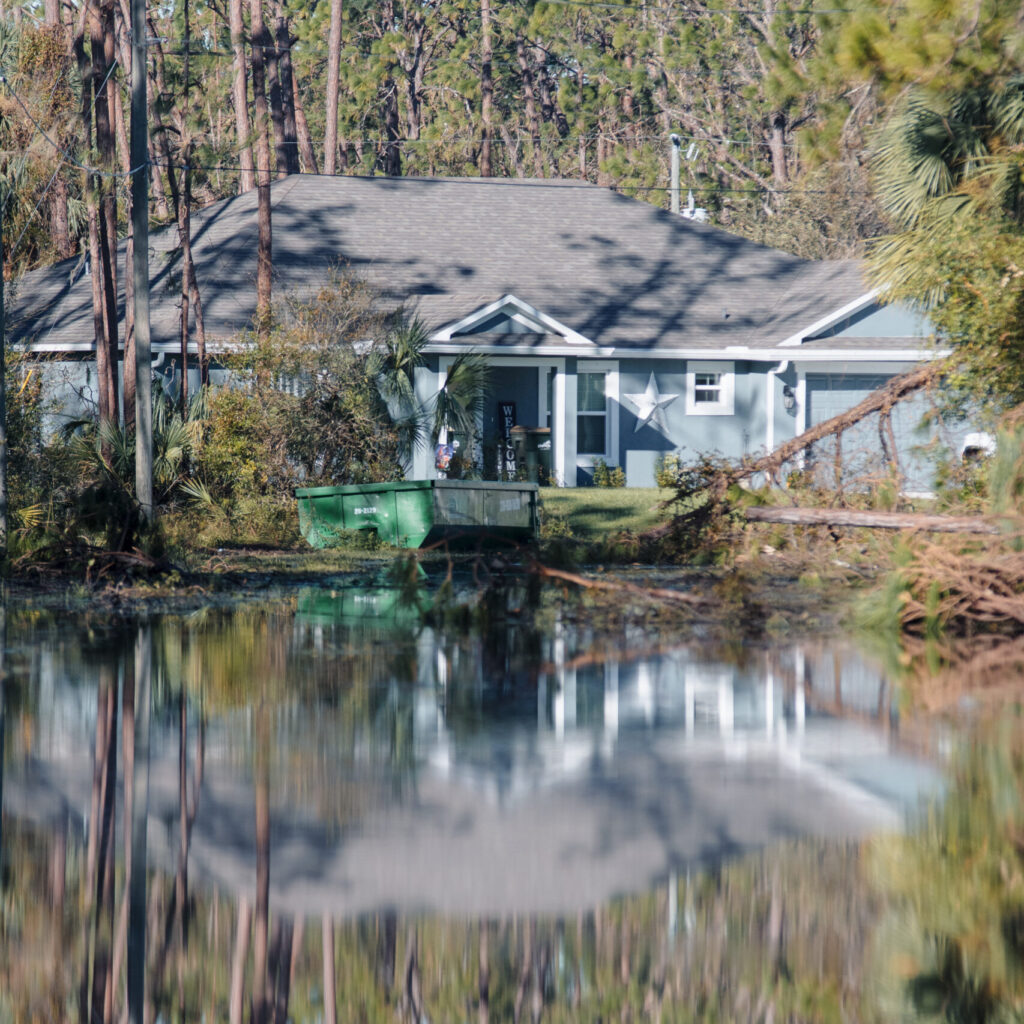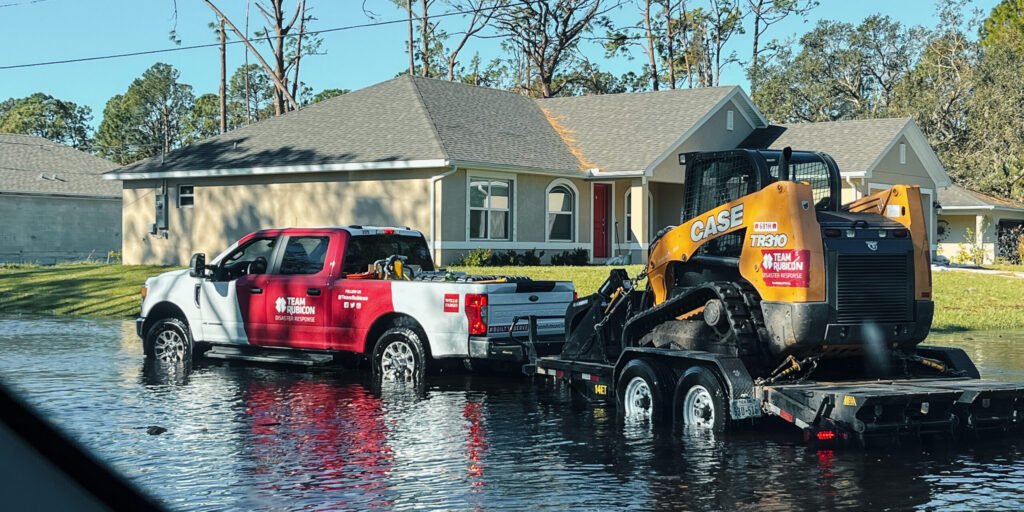Storm surge is nothing to be messed with. According to the National Hurricane Center, much of the Atlantic and Gulf Coast coastlines lie less than 10 feet above mean sea level, and 27% of major roads within the Gulf Coast region are at or below 4 feet in elevation. And while the visually dramatic howling winds and torrential rains of hurricanes and tropical storms often make headlines, storm surge can be the most devastating aspect of these storms. Understanding exactly what is storm surge is crucial to appreciating the risks associated with coastal storms and for implementing effective safety measures against them.
What is Storm Surge?
Storm surge is a rise in sea level that occurs during a storm, primarily due to the storm’s strong winds pushing water toward the shore. This surge of seawater can lead to significant flooding, posing a major threat to life and property in coastal areas. Such storm surge is caused by a combination of the following factors:
Wind-driven Water: The primary force behind storm surge is the wind. As a storm moves over the ocean, its strong winds push water toward the shore, causing it to pile up.
Low Atmospheric Pressure: The intense low pressure at the center of a storm causes the water level to rise. Although this contribution is smaller compared to wind-driven effects, it still plays a role.
Wave Action: The action of waves can exacerbate the impact of the surge by bringing water further inland.

Factors Influencing Storm Surge
Several factors can influence the magnitude and impact of a storm surge, including storm intensity and size, and even tides.
While stronger and larger storms tend to produce higher storm surges due to the greater force of their winds, a slow-moving hurricane or tropical storm can result in a prolonged surge, and extensive flooding. Even the angle at which the storm approaches the coast can affect surge height.
Coastal geography and the tidal cycle also play roles in storm surge. The shape and features of a coastline can amplify or mitigate the impact of a storm surge. Narrow bays and inlets can funnel water and increase surge height, while broad, shallow areas may reduce its impact. If a storm surge coincides with high tide, the resulting water level can be significantly higher, leading to more severe flooding.
Storm Surge Levels and Impact Defined
Storm surge can cause devastating effects, including widespread flooding, which can inundate homes, roads, and entire communities. It can also lead to erosion, damage to infrastructure—roads, bridges, utilities, and buildings can be severely damaged or destroyed by the force of the surge and the debris it carries—and loss of life.
Storm surge levels are often categorized by their height above normal tide levels:
Minor Surge: 1-3 feet
Minor storm surge can cause localized flooding in low-lying coastal areas but generally results in minimal damage.
Moderate Surge: 4-8 feet
Leads to more widespread flooding, particularly in vulnerable areas. Roads and infrastructure may be affected, with damage to homes and businesses.
Severe Surge: 9-12 feet
Severe storm surge typically causes significant flooding over large areas. Substantial damage to infrastructure, homes, and coastal defenses is likely. Evacuations may be necessary.
Extreme Surge: 13 feet and above
Extreme storm surge typically results in catastrophic flooding and widespread destruction. Extensive damage to buildings and infrastructure occurs, and evacuation of the affected areas is critical.

How to Prepare for Storm Surge
Understanding and preparing for storm surge and flooding is vital for reducing its impact. Preparing for storm surge is critical for homeowners living in coastal areas to protect their property and ensure their safety. Here are some ways homeowners can prepare for storm surge:
Understand Your Risk
Before any storm arrives, homeowners should determine their property’s elevation relative to sea level to understand the risk of storm surge flooding. Then, they should use FEMA flood maps or local resources to identify whether their home is in a flood-prone area.
Reinforce Your Home Before a Hurricane or Tropical Storm
If possible, elevate your home and critical utilities (like HVAC systems) above potential flood levels. Otherwise, install flood barriers around the home. This includes using sandbags, water-filled barriers, or flood panels to block water entry points. Sealing gaps is also recommended. Ensure that windows, doors, and other entry points are properly sealed against water intrusion.
Protect Valuables from Storm Surge
Elevating and waterproofing valuables—including things like insurance paperwork and home and auto titles—is essential to preparing for a storm. Move valuable items, documents, and electronics to higher floors or shelves, and store important documents and small items in waterproof containers to protect them from water damage.
Maintain an Emergency Kit
Ensure your emergency kit includes water, non-perishable food, medications, flashlights, batteries, a first-aid kit, and that other essentials are ready prior to a storm. Having devices like a crank radio can also keep you apprised of emergency alerts and weather. And, have a go-bag ready with essentials for each family member in case evacuation becomes necessary.
Plan for Evacuation
In case you must evacuate in the face of flooding or storm surge, it’s essential to be familiar with local evacuation routes and have a plan in place for a quick and safe departure. Pay attention to local authorities and evacuate promptly if advised.
When you do evacuate, never try to cross flooded streets. Six inches of floodwaters is enough to knock you down, and a foot is enough to sweep a vehicle away.
Storm surge is a powerful and often underestimated threat associated with coastal storms. By understanding its causes and impacts, communities can better prepare and respond to this natural hazard. Awareness and proactive measures are essential to safeguarding lives and property against the devastating effects of storm surge.



